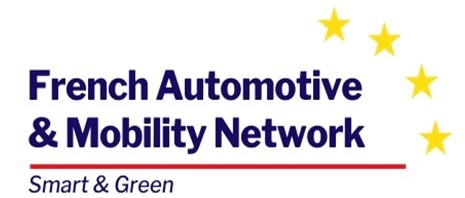Future Euro 7 regulations are expected in the coming months. Fully in line with the European Green Deal, it will define a set of standards aimed at reducing emissions from new vehicles as much as possible.
The context of the European Green Deal
In the context of the European Green Deal – the EU strategy for the transition to a climate-neutral economy – the European Commission is seeking to promote a transition to significantly less polluting modes of transport, particularly in cities.
To achieve this, the EU automotive industry must lead the global transition to zero-emission vehicles.
Beyond the efforts of the automotive industry to reduce emissions from vehicle fleets – including electromobility – the Commission considers that more needs to be done. The European Green Deal roadmap therefore includes a proposal for stricter air pollutant emission standards for combustion engine vehicles by 2021.
In this sense, the Commission is expected to publish a proposal for higher emission standards for combustion engines in the near future. The transition to these new standards was announced in December 2021 as part of the Smart & Sustainable Mobility Strategy:
Flagship Initiative 1: “Considerable efforts have been made over the past five years to reduce air pollutant emissions from motor vehicles. Cars sold today emit significantly less pollutants than in 2015. But more can be done: the forthcoming proposal on stricter air pollutant emission standards for combustion engine vehicles (Euro 7) will ensure that only low-emission, future-proof vehicles are put on the market.”
Developments to be expected compared to Euro 6
As a reminder, the overall objective of a possible post-Euro 6 initiative is to improve the current Euro 6 standards on air pollutant emissions from cars, vans, trucks and buses. This was announced by the Commission in a public consultation open between July and November 2021.
The general objective is to ensure a high level of environmental and health protection in the EU and the proper functioning of the internal market. The specific objectives are to improve air quality, with a particular focus on urban areas, by reducing emissions of air pollutants from road transport and by setting harmonised rules for vehicles. The operational objectives are to reduce the complexity and costs of complying with existing Euro 6 vehicle emission standards, to provide appropriate and up-to-date limits for all air pollutant emissions and to ensure that new vehicles control their air pollutant emissions throughout their lifetime and under all conditions of use.
The Commission has identified a preliminary set of policy options to achieve the specified objectives. These options have been developed taking into account the input from the Advisory Group on Vehicle Emission Standards (AGVES)[1]:
- A narrow revision of Euro 6 with a view to simplification and consistency. This option would involve the introduction of a single air pollutant emission standard for cars, LCVs, trucks and buses. It would also involve simplifying the tests.
- A wider revision of Euro 6 by including stricter air pollutant emission limits for all vehicles. This would involve stricter emission limits or new limits for currently unregulated pollutants (GHGs other than CO2).
- A complete revision of the Euro 6 standard by introducing real-world emissions monitoring over the lifetime of a vehicle. Air pollutant emissions data collected through on-board monitoring (OBM) would then be used for market surveillance and in-service compliance testing.
Overview of stakeholder positions
At the level of the European Commission, proposals have been made by the CLOVE consortium[2] and presented to AGVES in October 2020. These proposals include new requirements for real-world driving emissions test procedures (RDE for light vehicles and PEMS-ISC for heavy vehicles). Changes to on-road testing are also being discussed. The proposal would essentially aim to impose emissions testing in as many driving situations as possible.
In a position paper published in December 2020, the European Automobile Manufacturers Association (ACEA) criticised the CLOVE proposals. According to the manufacturers, these proposals must not undermine the competitiveness of the automotive industry in Europe and its place as a leading global industry.
In a position paper published in April 2020, the Verband der Automobilindustrie (VDA) also opposes the CLOVE proposals. The VDA believes that principles such as “as clean as possible” and “near-zero emissions under almost all driving conditions” run counter to effective regulation and carry the risk of regulation-induced over-engineering. It proposes to define a top-down impact assessment based on EU air quality objectives as a basis for guiding principles, and to derive cost-effective requirements to achieve the stated objectives for road traffic.
Timetable
Studies are underway, with scenarios presented for light and heavy vehicles. This should provide additional information for the European Commission’s impact assessment.
The European Commission’s proposal is expected by the end of 2021 and will be followed by an ordinary decision process of the European Parliament and the Council.
[1] The Advisory Group on Vehicle Emission Standards (AGVES) is a stakeholder group led by the DG GROW (European Commission)
[2] The CLOVE is the consortium of researchers consulted by the Commission to work on Euro 7
